
| HOME | |
| MEMBERSHIP | |
| ISM HISTORY | |
| OFFICERS | |
| TYPES OF IRIS | |
| IRIS CULTURE | |
| CALENDAR | |
| EVENTS | |
| DISPLAY GARDENS | |
| IRIS LINKS | |
| NEWS &VIEWS | |
| BYLAWS | |
 |
|
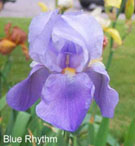 |
|
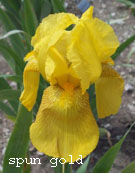 |
|
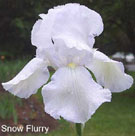 |
|
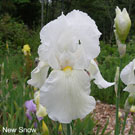 |
|
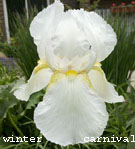 |
|
 |
|
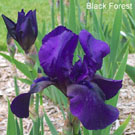 |
|
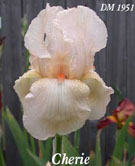 |
|
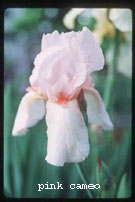 |
|
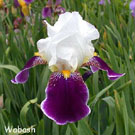 |
|
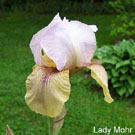 |
|
 |
|
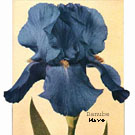 |
|
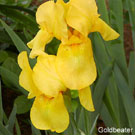 |
|
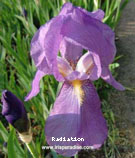 |
|
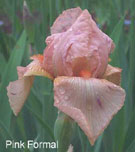 |
|
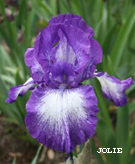 |
|
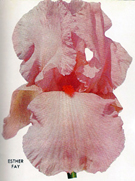 |
|
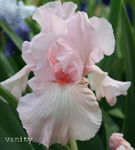 |
|
MINNESOTA IRIS FROM ITS BEGINNINGS TO 2019
Part One: The Beginning
In October of 1951, twenty-five people met at Rutherford's Garden Center in St. Louis Park and organized The Iris Society of Minnesota, which they called The Twin Cities Iris Society. Over fifty years later we are still meeting and celebrating the years together.
The social activity of growing and discussing iris didn't start with 1951, when the Iris Society organized. It started much before then. Earlier, iris lovers belonged to the Minnesota Horticultural Society, The Minnesota Flower Society or The Northwest Peony and Iris Society which changed to the Minnesota Peony and Iris Society in the 1940s. Beginning in 1919, you brought your iris to shows sponsored by these three groups. By 1936, they were having their Seventeenth show. On June 4th Howard Lindgrin won "Best in Show" with the tall bearded iris "Los Angeles."
While mostly the same people belonged to all three groups, the iris lovers didn't get enough "air time" to discuss their irises. Old newsletters from the Peony and Iris Society quote the iris malcontents in the late 40s, "all the officers are peony lovers," and "we had three newsletters all about peonies and only one about iris." These folks formed the core of the new iris society in '51. Although they also continued with the old peony group for friendship and joint shows, the shows eventually split apart.
In the '30s, if you wanted to buy an iris, you could go to 1350 Robert St. and buy from Schreiners or just call them at Riverview 3799. You could get a new introduction like "Ethiop Queen,"nearest approach to a black iris." Now one can buy the best of new blacks at Schreiners, but now from Oregon. There were other places to buy iris too.
There was a man by the name of J.P. Brown who grew iris by Lake Minnetonka and later at 2322 Como Avenue. J.P. started growing iris in 1916. A 1940 newspaper clipping from Minneapolis quoted J.P. as having 5832 varieties of iris, so that he had to give a few thousand away. He said he was inspired to have more iris than "those two brothers in Nebraska and that fellow in France." No doubt he was referring to the famous brother hybridizers Hans and Jacob Sass and to the Cayeuxs in France.
Now if you wanted to see dwarf iris in the '40s, you went to 32nd & Oliver N. in Minneapolis. There you would meet Elsie Worel Peterson, a member of the American Iris Society since 1934 and the first R.V.P. for Region 8, which in those days included Minnesota, Wisconsin, and North Dakota. (She was the author's great aunt.) Elsie, a judge for the American Iris Society, apprenticed a young fellow also interested in iris. That young fellow was Gus Sindt, the person who greatly influenced and supported the Iris Society of Minnesota for the next fifty years.
(The very first "garden of iris" in the midwest was here before the white folks came. Native Americans once lived in permanent villages in the Mississippi River valley, probably in present day Iowa. Outside of the village a pond or wet area would develop, because of removing clay for making pottery. The people often planted I. Virginica or I. Versicolor, which they used as medical remedies. See the article in the Bulletin of the American Iris Society written by Jesse Will, October 1952).
Part Two: The Formative Years
Part one described early activities of Minnesota iris lovers. This section will describe the irises and activities of the newly formed Twin Cities Iris Society, the first group in Minnesota devoted exclusively to iris. The January issue 1952 of The Bulletin of the American Iris Society announced the group. I quote in part:
"On October 18, 1951 a group of Iris enthusiasts met in Minneapolis and with a charter membership of twenty-five persons formed the Twin Cities Iris Society. Mr. W.G. Sindt of St. Paul was chosen the first President.
The purpose of the society will be to encourage the culture and popularity of the Iris in the Twin Cities area through a series of open meetings in which all phases of Iris culture will be discussed."
And to paraphase: hold an annual iris show and have municipal plantings.
The first winter of the iris group was not kind to their gardens. Elsie Worel Peterson, the first Regional Vice President of the American Iris Society reported the winter and activities in Mn., Wisc., and N.D. (Oct. 1952 Bulletin of A.I.S.): "All through our district winter injury was drastic. Some of our members reported total loss. Most, however. lost center bloom stalks, so of course, no bloom." But the shows went on. "The Twelth annual Iris show in Duluth was held June 20th and 21st." Mr. Granvil Gable, a charter member and long time commercial iris grower in south Minneapolis until the '70s, judged the show. According to Elsie's report, The Twin Cities Iris Society threw in with the old Peony and Iris Society to sponsor the "thirty-first annual show" June 1st and 2nd in Minneapolis. "Spun Gold", Exhibited by the Burns, won best in show. They operated Iris Gardens of Minneapolis. The Willmer Garden Study Club held their show June 6th, and Mrs. Edgar Olsen won the most blue ribbons. The favorite iris of 1951 was "Blue Rhythm." Both "Spun Gold" and "Blue Rhythm" can still be seen in the writer's garden.
In the fifties, popular and still good iris were: "Snow Flurry," "New Snow," Winter Carnival," and "Gudrun" (whites); "Helen McGregor," "Azure Skies," "Blue Rhythm," and "Great Lakes" (blues); "Black Forest" (blue black); "Ola Kala," "Rocket" (gold); "The Red Douglas" (red); "Cherie" and "Pink Cameo" (pinks); and "Wabash" and "Lady Mohr."

By 1953, the Twin Cities Iris Society was printing a newsletter. First called Iris News, it was changed to News and Views as it is called today. Bud Foss became the 2nd President in 1954. Back in the late '50s, the Iris Society was conducting a performance and hardiness poll. Points were given for hardiness, increase, and bloom habits. High point getters were "Blue Rhythm," "Apricot Supreme," "Danube Wave," "Goldbeater," "Radiation," and "Song of Songs." "Pink Formal" got high grades for bloom and stalk but not for increase.
As time went on into the sixties, many T.C. Society members tried their hand at hybridizing. They included Maybell Wright, Virginia Messer, Alice Foss, Alice Bakke, Edythe Burns, Victor Hartkopf, and Gus Sindt. David Sindt, son of Gus and Char, became well known for his work with Dwarf Iris. Some of his early SDBs include "Dark Spark," "Gypsy Flirt," and "Moon Shadows." Many of us still have his "Aachen Elf." Other later hybridizers were Reuben David, Ken Fisher, Dave Johnson, Carol Lankow, and Julius Wadekamper. The '60s brought affiliation with other out-state iris groups. The Merry Weeders, a fifteen member group in Moorhead had iris shows and even seven people up north had an Iris show. They were the Bagley Garden Club.
In 1962, a test garden was set up. The garden was located at Stan and Dorothy Rudser's home in Golden Valley. So far as the writer knows, it lasted through the '60s, and "Sioux Maiden" by Stan was the only iris seedling to be introduced from the garden. The sixties brought new society members. They were people like Glenn and Zula Hanson. Glenn's advice in many News and Views on iris culture are still good for today. Others include the talented Julius Wadekamper and the popular and unstoppable trio of Millie Stover, Maybelle Wright, and Alice Foss.
Part Three: Recent Years
1971 marked the twentieth year of the Twin City Iris Society. Under the leadership of Julius Wadekamper, the President, the Twin Cities Iris Society celebrated its Twentieth Anniversary in several ways. First, they put out a special anniversary yearbook with a colored cover, (I think it is Launching Pad) complete with the usual information and a short history of the society. The society also set up the mid-season iris show in the same building as the first show was held. Efforts were made to have a special table where the iris that had won Queen of the Show over the twenty years, were displayed. All but "Cloth of Gold" was found. Ed Holloway, Society President in '72 and '73, won Queen of the Show with "Jolie." The best pink was "Esther Fay" from Gables Gardens; and the best white was "Curled Cloud" from Glenn and Zula Hanson of Riverdale Iris Gardens. The society celebrated the twenty years by holding a special banquet organized by Alice Foss at the Ambassador Hotel. The last act of the group that year was to change the name to The Iris Society of Minnesota, to "reflect the activities and participation of the members and cooperating groups around the state."
In the later years, the group's size fluctuated between large and small. The last 30 years has shown nearly identical activities of preserving the love of iris with monthly meetings, iris shows, iris tours, the News and Views, Minnesota Arboretum planting, dig and plant sales, awards banquet, and the end of the year "Christmas party."
It is impossible to describe all the people from the last 30 years who have provided leadership and recruited new members, but we should remember a few. How many of you remember Ed Holloway's "Iris Thoughts while Shaving," that appeared in the '72 News and Views when he was President? And it was Dorothy Rudser who edited the News and Views in '72. She was still helping in 1988 and 1989 when I was President. Many people will remember Stan Rudser whose booming voice scared the hell out of me and maybe others, but his friendship picked out "Vanity" for me. "You have to have this pink." No one will forget the elfish Irishman, Walter Carlock, 1968 and 1985 ISM President, who sang and played the harmonica for iris meeting entertainment. I hated it when he sang "When Irish Eyes are Smiling," but now I'd give fifty bucks to hear Walter sing it one more time.
Lots of you became members because of Zula Hanson who kidded that she grew dwarf iris because of her stature. Zula and Glenn Hanson's Riverdale Gardens was bought by Tracy Jennings. Richard Krahn, 1981 President, grew mostly spurias, won all the late show ribbons with his mate Janice, and generally spread the word about spurias. And Dr. Jefferies, 1982 President, was convinced that the best iris were Louisianas. He grew a great number of seedlings sent by his friends from the south. He also started Louisianas at the landscape arboretum iris plantings. Michael Hager, President in '83 and '84 and author of perennial books for the Midwest, kept us on track and added his capable knowledge about companion plants. Ben Gowen "kept the money" and provided his place to wash and prepare iris for the summer plant sales for longer than I can remember. Alice Foss recruited me and provided a place for my first seedlings. Mary Duval, while never the President of the Society, (she was Region 8 RVP) was the woman behind the scenes and sometimes in front serving on every committee the society has ever had. Through the years from 1952 until the end of the century, Gus and Char Sindt were the heart and soul around which the Iris Society has revolved.
There is indeed plenty to remember and celebrate.
Jack Worel
Part Four: The 21st Century
The beginning of the 21st Century brought a drop in memberships for ISM. With the expansion of social media, the internet and “Siri,” the need to attend iris meetings decreased. One could get their gardening questions answered at home.
Despite this temporary drop in membership, ISM managed to host the 2011 National Beardless Iris Convention. Under the leadership of Barbara and John Sautner, the convention was a great success. Bill Dougherty, a local Siberian hybridizer, supported their efforts and helped with training sessions.
During the last 8 years, ISM has begun to grow again. Recent Presidents Michelle Dreier and now Tatiana Allen provided the new age technical skills. We now have a web site, an iris forum and the use of Facebook. Many new members now share their iris experiences and pictures with each other. Marte Hult, Holly Johnson, and Tatiana Allen keep these information systems running smoothly.
Thanks to the efforts of President Tatiana Allen, we now operate a second public iris garden in Northeast Minneapolis with the cooperation of the Minneapolis Park Board. We continue to support the iris garden at the University of Minnesota Landscape Arboretum. Both provide income and volunteer iris gardening learning experiences.
The ISM will continue to grow and prosper, meeting the gardening and social needs of members. My great Aunt Elsie Peterson from the 30’s would be proud!
ISM and AIS members you may have known are; Glen and Zula Hanson, Mary Duvoll, Glen and Char Sindt, Julius Wadekamper, Joan Cooper, Walter Carlock and Wally Doehne to name a few.
Jack Worel (with assistance from Tim and Gerry Moore)
Author's Note: All the information contained in Parts One-Three of this article was obtained from the ISM library "historical folder," past News and Views articles, particularly 1952 and 1971, American Iris Society Bulletins, and other documents. Thanks to Patti and Lloyd Weber, the savers and keepers of the ISM Library.
(This history through Part three originally appeared in three issues of News and Views in 2002. The historical iris pictured in this article are from the photos of the Historic Iris Preservation Society, HIPS and the AIS Iris Encyclopedia. Photos of a few iris mentioned in this article were not found.)
Part Four: The 21st Century was added by Jack Worel in October 2019.

Last updated:
January 13, 2023